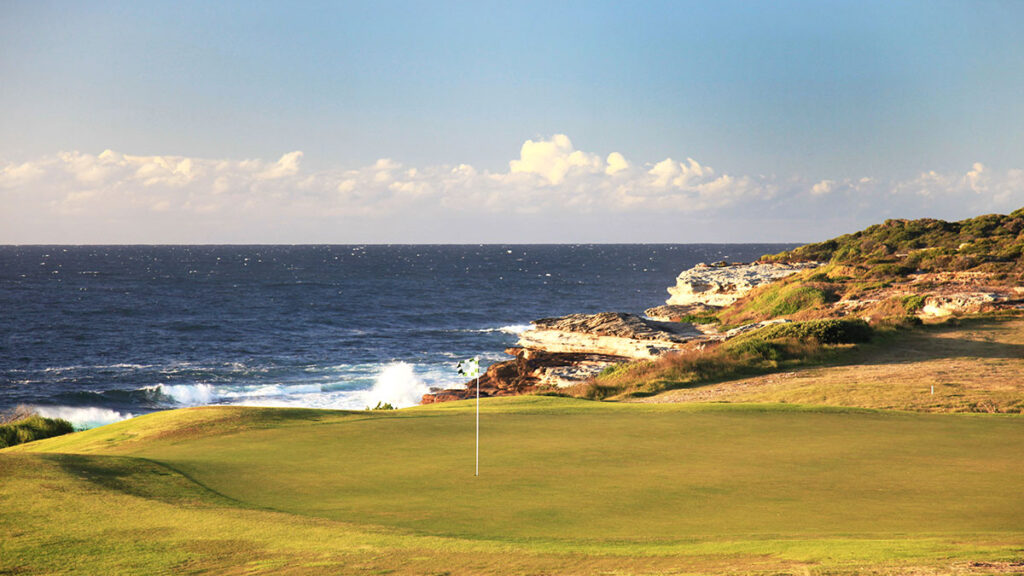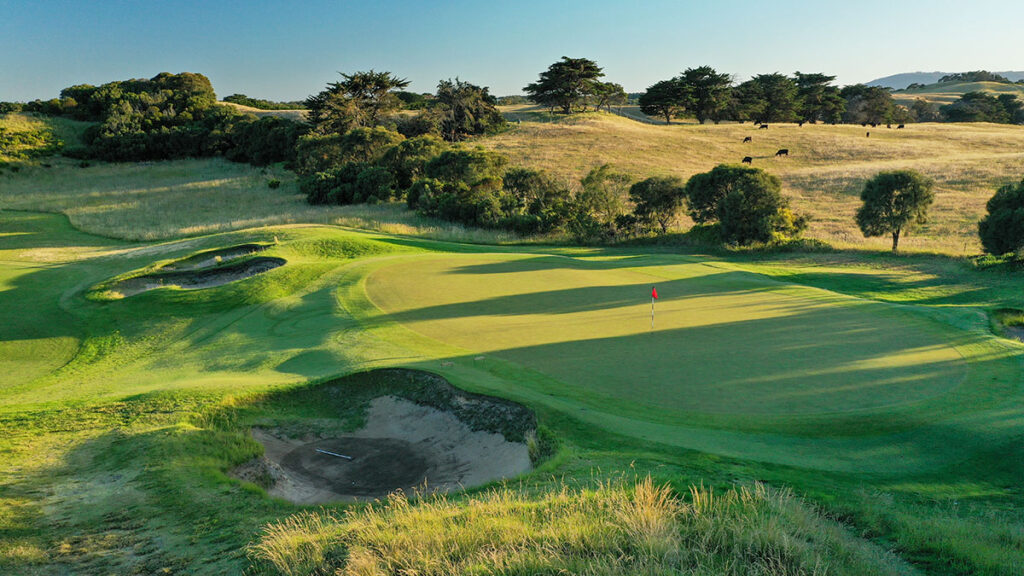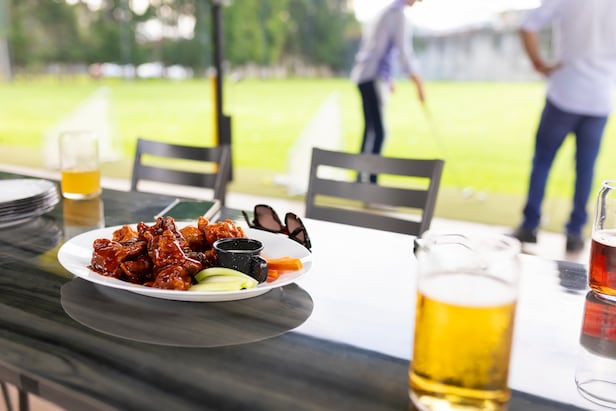World’s Best Green Fees: The Lucky Country – Australian Golf Digest

- by Admin
- August 28, 2024

Amid escalating green fees at some of the world’s best golf facilities, Australia’s top courses remain relatively affordable. When it comes to playing golf Down Under, it’s little wonder golfers from around the world consider Australia to be…
Golf participation is undergoing a boom all around the world. Statistically, the game has flourished since the onset of the COVID pandemic as more people discover the health-related benefits of playing golf. More women and juniors are playing the game in Australia. Memberships at many golf clubs are full and it’s even difficult to book a tee-time at some courses.
Yet the cost of playing a round of golf appears to be rising. Green fees at some of America’s top resorts are on par with the average weekly wage in Australia of $1,431 (Source: ABS ‘all employee average weekly total earnings’).
One of the world’s most expensive facilities is Shadow Creek Golf Course in Las Vegas where the green fee is $US1,250 to play a Tom Fazio design. Built for a reported cost of $US60 million, Shadow Creek was the private club of property mogul Steve Wynn. Now owned by MGM Resorts International, it was the venue that hosted ‘The Match: Tiger vs Phil’ in 2018.
In Florida, golfers willingly cough up $US900 for the Tournament Players Club Sawgrass to be punished by the Stadium course known for its intimidating island green on the 17th hole. The Pete Dye masterpiece that hosts the Players Championship is reported to average 50,000 rounds a year, making it a nice little earner for the PGA Tour, which has its headquarters on the Ponte Vedra Beach property. That equates to green-fee revenue of $US45 million before extras such as caddie fee, caddie tip, food and beverage, merchandise and stocking up on golf balls. It’s worthwhile adding the PGA Tour acquired the 415 acres (168 hectares) of former swampland from Paul and Jerome Fletcher for $US1
(and the original cheque is displayed in the clubhouse).
Pebble Beach Golf Links has been described as ‘heaven on earth’ for the sheer beauty of the coastal setting on California’s Monterrey Peninsula. Not so the green fee, which has increased to $US675. Add cart fee ($US50), caddie ($US155) plus forecaddie ($US52.50) and you’re forking out $1,400 in Australian currency. It’s also not cheap to stay at one of the three on-site resorts: The Lodge at Pebble Beach (which is priced from $US1,145 per night), The Inn at Spanish Bay (from $US995) and Casa Palmero (from $US1,345).
What it costs to play some of America’s great golf courses
| Course | Cost |
|---|---|
| Shadow Creek | $1,250 |
| TPC Sawgrass | $900 |
| Pebble Beach | $675 |
| Kiawah’s Ocean Course | $650 |
| Wynn Golf Club | $600 |
| Doral (Blue Monster) | $595 |
| Harbor Town | $593 |
| Whistling Straits | $555 |
| TPC Scottsdale | $551 |
| Greenbrier | $550 |
The accompanying panel is a snapshot of green fees at high-profile American golf facilities. It begs the question as to whether these leading facilities are ‘price gouging’ golfers.
“We all value the experience differently,” says Jeff Blunden, managing director of Golf Business Advisory Services (GBAS). “Having played a few of those places, I remember Kiawah Island, I remember the Blue Monster. I’ll take those memories to the grave.
“The price base also reflects the cost base. It might be significantly more investment in maintenance costs, the little attention to detail. The cost to deliver golf in remote locations – you’ve got to pay higher salaries and wages to keep staff mired to the venue. You’ve got greater agronomy challenges in some parts of the market where it’s hot and/or cold.
“And if they’re commercial, they’re commercial. If the market’s prepared to pay it, and the sums make sense, each to their own. It’s all relative to your own situation. There are more wealthy people in the US who are prepared to pay it because the market’s 10 times as big as we are.”
GREEN FEES SPIRALLING IN ASIA
Elsewhere, golf in South-East Asia isn’t cheap anymore. Where it once boasted some of the best-value golf, the premier courses appear to be following the precedent set by America’s top resorts.
In Thailand, Bangkok’s big five public-access courses – Alpine, Thai Country Club, Royal Gems City, Navatanee and Nikanti – charge $200-$300 for 18 holes with caddie and cart. The green fee at the new Ballyshear Golf Links designed by Gil Hanse is $350-$400.
The sheer number of North Asian golfers travelling to South-East Asia is driving up green fees as well as reducing tee-times as they’re also acquiring memberships, says Harley Kruse, former president of the Australian Golf Course Architects Association.
“You’ve got Chinese, [Japanese] and South Koreans travelling out of their northern Asia winter to play golf in Thailand, Vietnam and Indonesia. So the green fees in Asia are $US150, $180 for some of the courses,” Kruse says. “Is it price gouging or market-driven in the sense that it’s supply-and-demand?”
Kruse was involved in the construction of Legend Danang Golf Resort in Central Vietnam that boasts 18-hole layouts designed by Greg Norman and Jack Nicklaus. The Norman course was designed to accommodate 40,000 rounds a year. However it’s hosting double that amount after the owners prioritised quantity over quality.
“Now it’s 150 US dollars and they’re doing 70,000, 80,000 rounds a year… Is it gouging or are they just saying we’ll keep testing the water on what we can charge?” Kruse asks. “They could say, ‘We’ll do 30,000 a year,’ and make it $US300 a round.”
Air travel has contributed to the rising cost of golf. Kruse recalls that as a university student in 1985, he once took a return trip to Europe via Philippine Airlines for $2,400. Four decades later and you can still travel to Europe for $2,400. “So air travel has become [relatively] cheap. There’s more people touring and getting out of their countries, playing golf at different places around the world,” Kruse says.
For the time being, Australia appears to be bucking the trend of excessive green fees. The asking price to play Cape Wickham Golf Links on Tasmania’s King Island in peak season is $225. Visitors can enjoy a full day’s unlimited golf at the new No.1 on Australia’s Top 100 Golf Courses for $275. The standard rate for a king or twin room in one of Wickham’s 16 on-site villas is $280.
The Dunes Golf Links on Victoria’s Mornington Peninsula offers outstanding value for a layout ranked 26th on Australia’s Top 100 Golf Courses. You’ll even get change from a ‘Dame Nellie Melba’ for a midweek round on the Tony Cashmore design ($95 Mon-Thurs; $120 Fri-Sun).
For the price to play just once at Shadow Creek, visitors to Peppers Moonah Links Resort can play 10 rounds in peak season at the Rye facility that features two layouts with the imprimatur of five-time Open champion Peter Thomson ($125 Oct-April; $110 May-Sept).
Great value exists across the continent. In Western Australia, it’s $60 to play Albany Golf Club (No.99). At Yarrawonga on the Murray River, seniors can play Black Bull Golf Resort (No.75) for just $25 on Tuesdays and Thursdays.
REST OF THE WORLD’S NOT EXPENSIVE, AUSTRALIA IS CHEAP
Australia is an anomaly in the world of golf-course management, according to Kevin Gates, Club Car’s regional vice-president (Oceania) and an Asia-Pacific delegate for the golf cart industry association.
Gates provides an anecdote to illustrate his point. He recently paid $US280 for a round at The Phoenician club in Scottsdale, Arizona, where he received a ‘business partner’s discount’ to play on a Saturday morning. He compares that experience to paying $80 in Australia for five hours of entertainment on 40 hectares of land, which equates to better value than a ticket to the movies.
“My position really is that we’re relatively cheap [compared] to the rest of the world. And people that come across from the States will absolutely say the same thing. They can’t believe they can go to St Michael’s and play for $US75,” Gates says. “[With a membership] for $US3,600 a year, no monthly dues and free golf unless you’re paying $15 in the competition on a Saturday – 15 minutes from the heart of the city on Sydney’s eastern beaches.
“It’s our business model – 90 percent of our golf courses are non-profits. You look at the US and Thailand, they actually have an owner so there’s corporate accountabilities. They pay tax. The owners look for a return on their investment that’s better than they can get investing elsewhere.”
As Gates says, most golf clubs in Australia and New Zealand are run by boards whereby all profits must be retained by the facility and spent inside the facility for the betterment of members and their guests. Golf clubs in the United Kingdom have a similar tradition, although courses there are becoming increasingly corporatised.
“There’s no over-arching corporate intelligence that says: ‘To make proper money out of a round of golf, we need to be charging $185 a round’ – which is about where it should be if you draw a line through what a similar course would be in California,” Gates says.
Australian golf clubs are locked into a ‘democratic’ tug-of-war where the majority – or mob – holds sway. There has been antithetical reluctance to raise green fees or membership subscriptions. Put simply, golfers won’t stand for it. As a result, many golf clubs are asset rich and cash-flow poor and lack funds to replace ageing infrastructure and/or pursue course improvements.
“That’s where you run into a problem with all of these historical membership models where the older you are, the less you pay,” Gates says. “Purely because there are so many variables because the industry is board-run, not ownership-run.”

FACTORS THAT INFLUENCE GREEN FEES
A golf facility’s expenditure has a significant bearing on green fees and course maintenance comprises the largest allocation of expenses. Typically in Australia, top courses have a maintenance budget between $1.5 million and $2.5 million. That includes staff wages, new equipment, chemicals and fertiliser (for which the price has skyrocketed in recent years).
Turf quality, soil and climate each have a bearing on course maintenance. In that regard, Cape Wickham Golf Links would have to be the most inexpensive of all the world’s highly rated courses to maintain. With a fast-draining sandy soil, the Darius Oliver/Mike DeVries layout has a maintenance budget of just $350,000. It’s literally just mowing the fescue fairways and cutting/rolling the green complexes for the three-man crew.
Nevertheless, the cost to deliver golf is higher than ever, says GBAS’s Blunden. Equipment and machinery costs have doubled in some instances since COVID impacted supply chains. The price of a fairway mower from a leading brand has risen by 50 percent in just four years. And golf facilities are waiting longer to receive goods. Government legislation with regard to staff wages has also impacted the industry and filtered through to the cost of golf.
The cost of replacing amenities and pursuing course improvements is prohibitive. For instance, a new irrigation system for 18 holes with precise control of water ranges from $1.8 million to $2 million (a 50 percent rise in the past two decades). Constructing a new green to USGA standards will be in the vicinity of $120,000 if designed by an accomplished golf-course architect.
At some Australian clubs, golfers aren’t bearing the true cost of golf. Green fees and membership subscriptions may be subsidised by food and beverage, cart fees and poker-machine revenue.
WHAT SHOULD WE EXPECT?
Club membership peaked in Australia in 2000. Since then, prior to COVID in 2020, there was more supply than there was demand. That is, more tee-times available at golf courses than those wishing to play. We were conditioned to think golf should be cheap.
“In order to attract demand, pricing had to be really competitive. But that didn’t mean pricing was sustainable,” says industry expert Blunden. “The price rises that have happened since COVID are largely allowing clubs to catch up on what they’ve never been able to do. Because demand was never in their favour.”
Blunden’s GBAS has been encouraging clients – golf clubs – to have good vision, a strong capital plan, better forward capital planning and to communicate with their members about what the club really needs to thrive, not just survive. He is also at pains to point out that golf in America isn’t necessarily expensive. Of almost 16,000 golf courses in the United States, more than 90 percent would have a green fee of less than $US50. In fact, the average green fee is about the $US35 mark, according to National Golf Foundation data.
“Every town’s got a golf course and they’re all vulnerable to the size of the local market. So while we hear about the big ones, there’s many we don’t hear about who really are the market for the everyday golfer,” Blunden says.
So while green fees at America’s best resort courses may appear excessive, it really does highlight how good we have it in Australia.
“We are lucky because it is so cheap as it is anyway – $6,000 to be a member of a [Melbourne] Sandbelt golf course. People would give their left arm and leg in the US to be a member of a club like that. We just don’t know how good we’ve got it.”

Opinion: Why golf tourism is Australia’s sleeping giant
Apart from the Melbourne Sandbelt, Australian golf destinations have struggled historically to market themselves to the world. In a nutshell, the tyranny of distance hinders golf tourism Down Under.
Why would Americans seek to play the resort courses of South-East Queensland with golf destinations such as Myrtle Beach, Hilton Head Island, Jacksonville and Palm Springs on their doorstep?
But as green fees climb at the world’s best resorts, it presents a wonderful opportunity to promote golf across this Sunburnt Country. Australia represents outstanding value for the travelling golfer.
Reasonably priced green fees are partly due to Australia’s temperate climate that allows for playable courses all-year round. Golf facilities have a constant revenue source without the need to jack up rates in peak season.
Inexpensive green fees also stem from the relatively low cost to maintain courses in Australia. That’s partly due to the excellent training our turf managers receive both on the job and in the classroom. Australian superintendents are highly regarded internationally for their vast knowledge and strong work ethic.
So how do we capitalise on these magnificent golf assets? Given the corporate world appears to consider golf a niche sport, it really is up to the golf industry to come up with novel ways to spread the word.
Given Bryson DeChambeau’s huge following on social media, imagine the publicity Australian golf would generate by inviting the US Open champion and his Crushers GC teammates to spend a week in South Australia prior to LIV Golf Adelaide. They could project a spotlight on the state’s superb golf courses along with the wineries of the Barossa Valley, Coonawarra and Fleurieu Peninsula.
What about inviting the likes of Rory McIlroy and Hideki Matsuyama to combine an Australian Open appearance with a promotional tour at one of our great golf destinations? Or asking Minjee Lee and Min Woo Lee to spruik Australia to the golf-crazy Korean market who would do just about anything to hit balls anywhere else than a multi-storey Seoul driving range? – Rohan Clarke
The Latest News
-
January 9, 2025Just days left to apply for jobs in Antarctica – Australian Antarctic Program (News 2025)
-
January 9, 2025TGL draws strong TV ratings for opening night – Australian Golf Digest
-
January 9, 2025Australian Open: Destanee Aiava wears vintage dresses as she uses qualifying as ‘fashion runway’
-
January 9, 2025This year’s Australian Open matches to watch, and those to wait for
-
January 9, 2025Tears fall as top ranked Aussie wins grand slam spot





